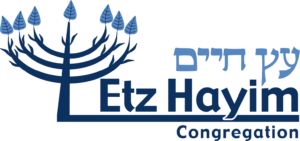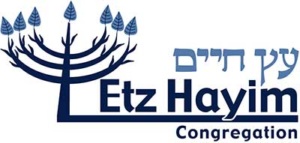Take another look to the beautiful words she said during our Rosh Hashanah Celebration!
The author Chimamanda Ngozi Adichie delivered a TED talk titled “The Danger of a Single Story”, about how stereotypes limit and shape our thinking. At the age of 9, she had read only classic British books, about princesses and castles, long flowing blond hair and valiant princes. As she started writing her own stories, they all involved white, blonde, blue eyed people that talked about the weather – a very far stretch from her middle class, Nigerian reality, where you never needed to talk about the weather, since it was always the same.
She tells a story of speaking at a US University where, during the question and answer session, a student said that it was such a shame that Nigerian men were physical abusers, like the father character in one of her novels. With a hint of irritation, she responded that she had just read a novel called American Psycho – and that it was such a shame that young Americans were serial killers.
The student had a single story about Nigeria – in his mind, based on his reading of a book, Nigeria was a whole country of people who abused and were abused. Ms. Adichie wanted him to see that her reality was as varied as his, and that one cannot create an image of a whole country based on a single story.
Our tradition is quite conscious of the dangers of a single story.
Let me give you an example. For Benjamin’s Bar Mitzvah, I made his tallit. In the Atarah, the neck piece, I quoted a verse from the Book of Deuteronomy: “And to Benjamin (Moses) said, you are a friend of God.”
In the end of the book of Deuteronomy, Moses blesses all the tribes, and since Jerusalem, and therefore the Temple, was in the territory of the Tribe of Benjamin, the tribe is depicted as a friend of God, and guardian of the Temple, our people’s main source of relationship with God during many centuries.
Yet, the Torah doesn’t want us to see a single-sided story. No one is one-dimensional.
In Chapter 49 of the Book of Genesis, Jacob calls his sons together before dying and gives each of them a “blessing.” I put quotation marks around the word blessing because while the Torah text defines it as both prophecy and a blessing, it is really more a curse. Here are the words to the Tribe of Benjamin: 27. “Benjamin is a ravenous wolf; in the morning he shall devour the prey, and at night he shall divide the booty.”
What happened to the Tribe of Benjamin being God’s friend?
This description only makes sense when we know the gruesome story found about the tribe of Benjamin in the end of the Book of Judges, Chapters 19-21. In that part of the narrative, men from one city in the territory of the tribe of Benjamin are responsible for a savage attack on a young woman from the Tribe of Judah. That attack motivates a counter act from the other Israelites, escalating into a civil war. In the end, the tribe of Benjamin is almost wiped out from the people of Israel. Even in the Torah, there is no single story. The tribe of Benjamin has elements of both; a friend of God and a ravenous wolf. Had we only the Deuteronomy description, we would have a peaceful image of the Tribe of Benjamin. It wouldn’t be a full image. It would be a stereotype.
If we had only the story that uses the image of a ravenous wolf, we would be stereotyping, also, and we would be opening the possibility for a dangerous situation. The act was committed by some men, in one city, in the territory of one tribe. By depicting the whole tribe as animals that can be hunted, the Torah ends up creating fertile ground for a bloodbath. In the book Less than Human, Dr. David Livingstone Smith explains that when we equate people with animals, we limit our vision, and shape our perception in a way that has difficult consequences.
We dehumanize them, believing that while people may look like humans, where it really counts, they are animals, either vermin or beasts of prey that must be eliminated, one way or another. While we might be tempted to see comparisons of people to animals as mere talk, as nothing more than degrading metaphor, we must understand that dehumanization is not a way of talking. It’s a way of thinking that, sadly, comes all too easily to us. Dehumanization acts as a psychological lubricant, empowering us to perform acts that would, under other circumstances, be unthinkable.
We lose the perspective of what other people are: a collective of individuals that have an identity and community, people who can make choices, entitled to live according to their own goals. The danger of a single story, the danger of seeing people as less than human, is that it allows us the moral justification to commit atrocities and destruction. The psychologist and Harvard professor Herbert Kerman knew from bitter experience what happens when inhibitions against violence are lifted, since he survived the Nazi Holocaust. He concluded that there are psychological and social mechanisms that caused this to happen. The first is authorization: When people in positions of authority use demeaning language, and then verbally endorse acts of violence, the individual that carries out the savage act is less inclined to feel personally responsible, and therefore, less guilty in performing them. What follows is routinization. Following a rigid routine eliminates any need for making decisions, and with that no need to ask awkward moral questions. In other words, what we hear conditions our thinking, creates the single story that allows us to see others as non-humans, which then gives us the moral justification for their elimination. Before we say to ourselves that we don’t demean, dehumanize, and exterminate other people, we have to acknowledge the role of violence in our culture.
Professors Alan Page Fiske, from the University of California, LA, and Tage Shakti Rai, from Northwestern University, in their book entitled Virtuous Violence, explain that most violence is motivated by moral sentiments.
They write:
“Most people do not simply justify or excuse their violent actions after the fact; at the moment they act, people intend to cause harm or death to someone they feel should suffer or die.”
Most violence is intended to regulate relationships, and the one that does the violence, as well as the community around the perpetrator and the victim, perceive the action as correct, consistent with their cultural rules.
An example:
Many years ago, when my son, Benjamin, was 3 years old, I was in line at a children’s store to buy something for him. In the line right next to me, there was a mother, speaking to her children in a language I did not recognize. She had a sleeping baby in a carriage, a boy that seemed to be the same age as Benjamin, and 3 other older children. She was obviously not paying much attention to the 3-year-old, so he did what children his age do – jumped on the baby carriage, and woke up the baby, who started wailing. The mother immediately screamed at the boy, and slapped him hard across the face, sending him flying a few feet away. I was horrified. My first instinct was to scream at her, in moral outrage. After all, her hurt and broken child will be sharing this world with my child! Yet, not too long ago, parents and teachers had no hesitation to spank a child. Spare the rod and spoil the child, was the saying. After some reflection, I understood that I did not know the cultural norms for this other mother. I believe we were both acting according to our definitions of what is moral and what is not.
Today, all around the world, we are locked in a battle of moral claims, in points of view that accommodate only a single story.
And that is dangerous.
A single story is dangerous because it allows us to use language that dehumanizes the other, seeing them as not fully human. A single story does not give us the room to question the moral ground that regulates social relationships according to cultural norms. We forget that every group is created by human beings, that every human being is created in the image of God, and that we are not defined by one single story. We don’t celebrate the world for what it is – a mishmash of people, who live, learn, love, and breathe the same air we breathe, drink the same water we drink, eat the produce of the same earth we eat.
It is dangerous when people in positions of authority revert to a single story to define other people. It is dangerous to generalize and assign blame to whole groups, and not see people as individuals who are part of a group. It is dangerous to incite morally righteous violence. Today, in the world we live in, we must truly listen, and decide if we are listening to a single story, or a story that represents the full gamut of reality. Do we have a balanced point of view, or are we just listening to one version of reality? In our version, do we see others as just one monolithic group, defined in ways that can lead to their extermination, or are we seeing them as people like us? We can get stuck in the single story of hatred, name calling, and anger. We can get stuck in the single story of us versus them. In the vast majority of cases, no human being is purely good, and no human being is purely evil. No human being has the monopoly on acting perfectly, correctly, at all times. We are all motivated by our culturally-determined morals. We all have multiple stories.
In the Talmud, (Massechet Sanhedrin 37a) we read that witnesses in Capital offense cases were lectured sternly before they would give their testimony. The speech of the Judges centered around the idea that every human being was important. One of the examples they would give was that when people create coins from a mold, they are all the same. But when God created us, even though modern science tells us that 99.9% of our DNA is the same, we are still individuals, with different tastes, likes and dislikes, opinions, abilities, and dispositions.
Even though we are all created from the same mold, none of us has a single story. May we, in this coming year, use our mental capacities to listen to multiple stories. May we reject the stories that limit our understanding of the variety and potential of people, that incite violence, that generalize and erase the humanity of others.
May we take an active role in pointing out when and where the story restrains our capacity to love and understand our fellow human beings. And may we rejoice in the multiplicity of stories that makes our world more interesting, richer, and peaceful.

